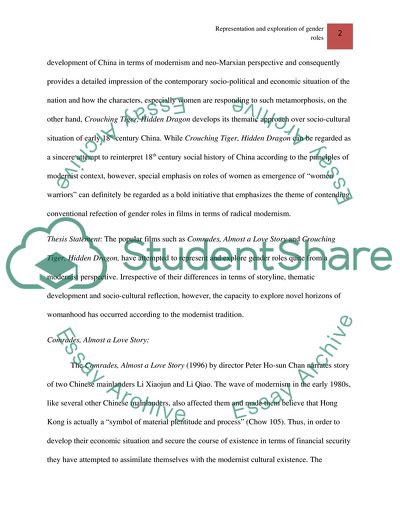Cite this document
(“Representation and Exploration of Gender Roles in Comrades, Almost a Term Paper - 1”, n.d.)
Representation and Exploration of Gender Roles in Comrades, Almost a Term Paper - 1. Retrieved from https://studentshare.org/visual-arts-film-studies/1753380-representation-and-exploration-of-gender-roles-in-popular-film-comrades-almost-a-love-story-and-crouchingtigerhidden-dragon
Representation and Exploration of Gender Roles in Comrades, Almost a Term Paper - 1. Retrieved from https://studentshare.org/visual-arts-film-studies/1753380-representation-and-exploration-of-gender-roles-in-popular-film-comrades-almost-a-love-story-and-crouchingtigerhidden-dragon
(Representation and Exploration of Gender Roles in Comrades, Almost a Term Paper - 1)
Representation and Exploration of Gender Roles in Comrades, Almost a Term Paper - 1. https://studentshare.org/visual-arts-film-studies/1753380-representation-and-exploration-of-gender-roles-in-popular-film-comrades-almost-a-love-story-and-crouchingtigerhidden-dragon.
Representation and Exploration of Gender Roles in Comrades, Almost a Term Paper - 1. https://studentshare.org/visual-arts-film-studies/1753380-representation-and-exploration-of-gender-roles-in-popular-film-comrades-almost-a-love-story-and-crouchingtigerhidden-dragon.
“Representation and Exploration of Gender Roles in Comrades, Almost a Term Paper - 1”, n.d. https://studentshare.org/visual-arts-film-studies/1753380-representation-and-exploration-of-gender-roles-in-popular-film-comrades-almost-a-love-story-and-crouchingtigerhidden-dragon.


